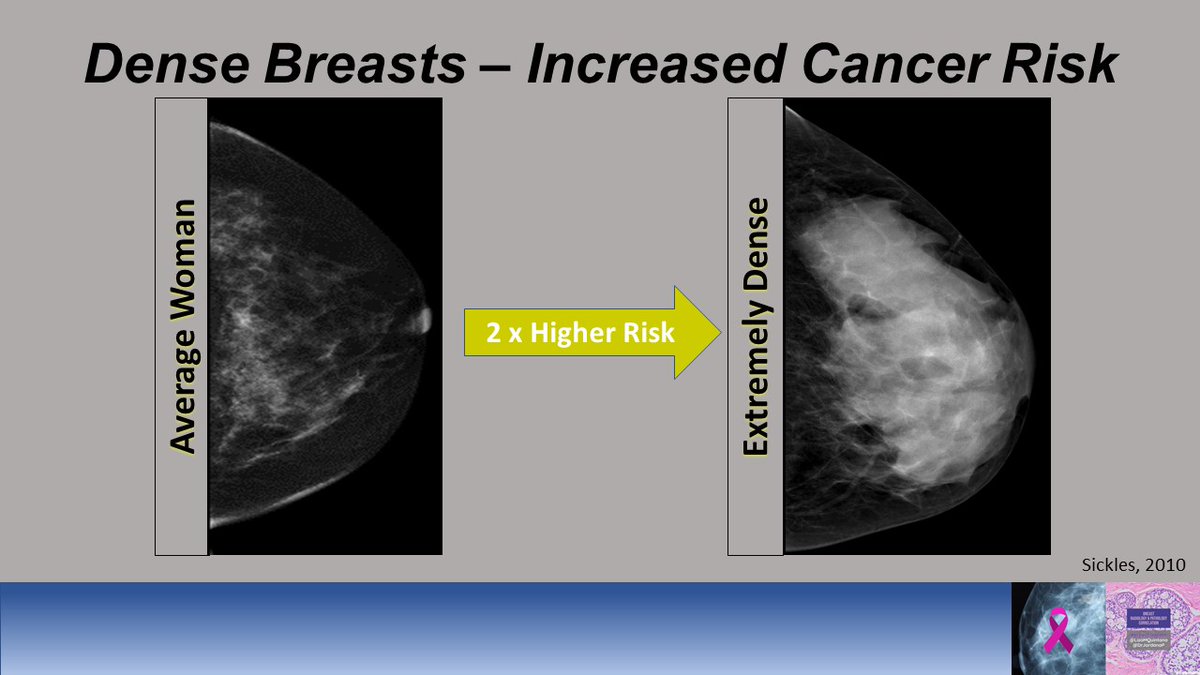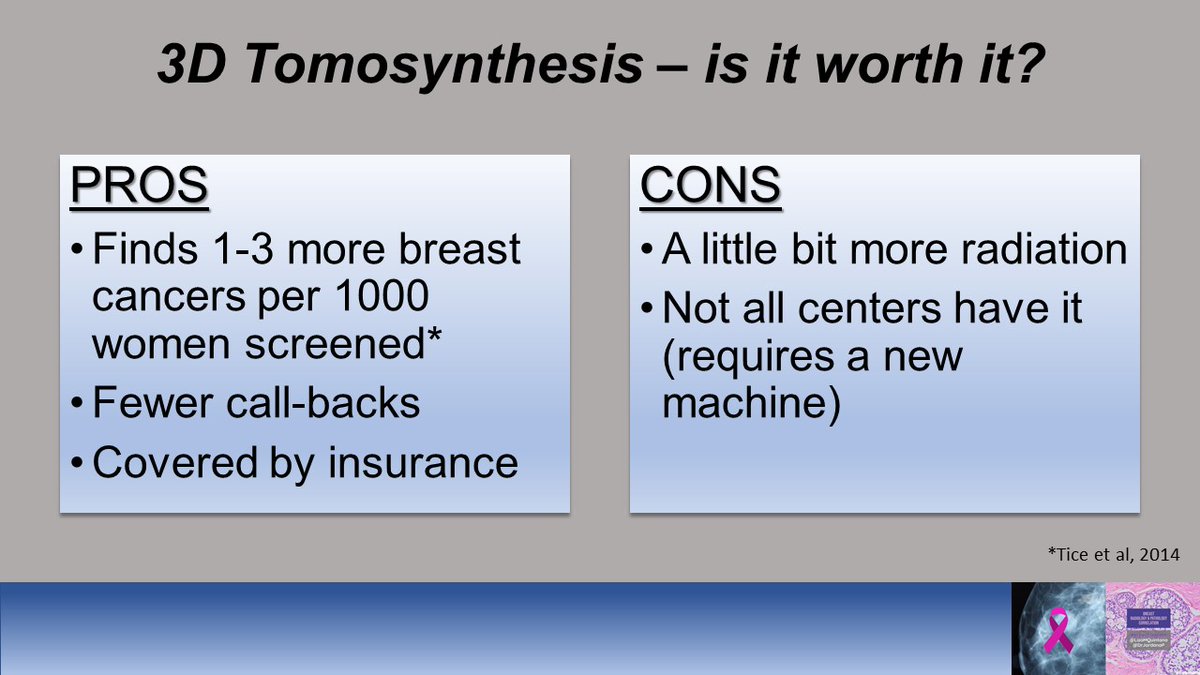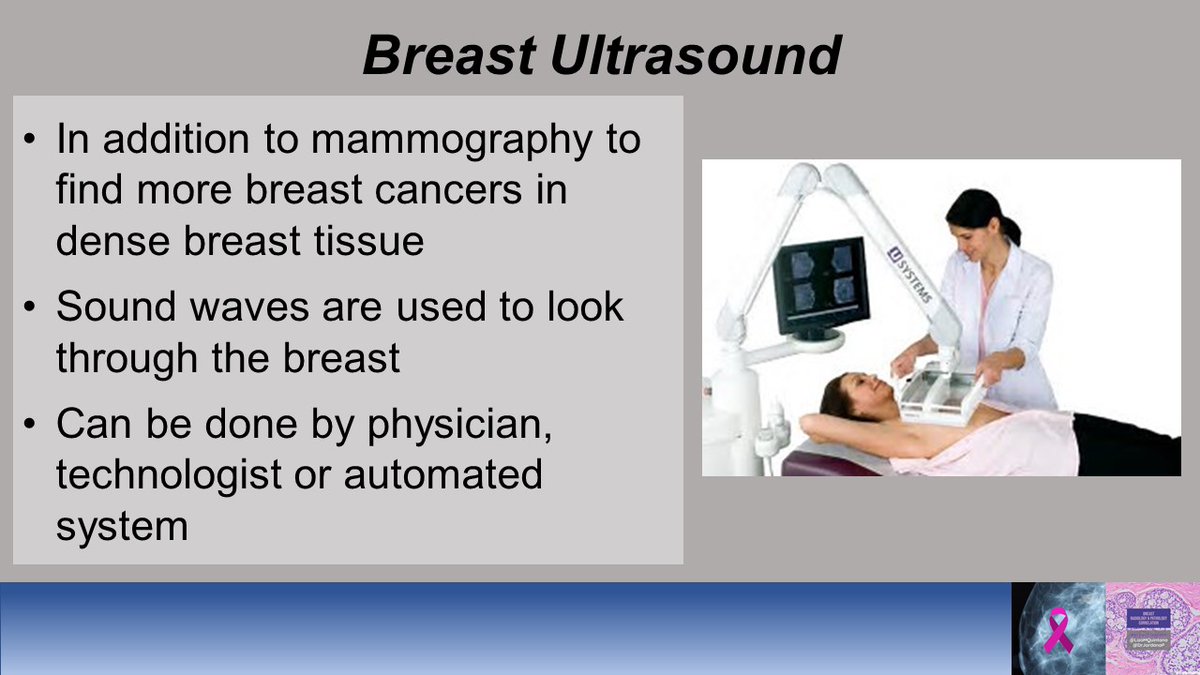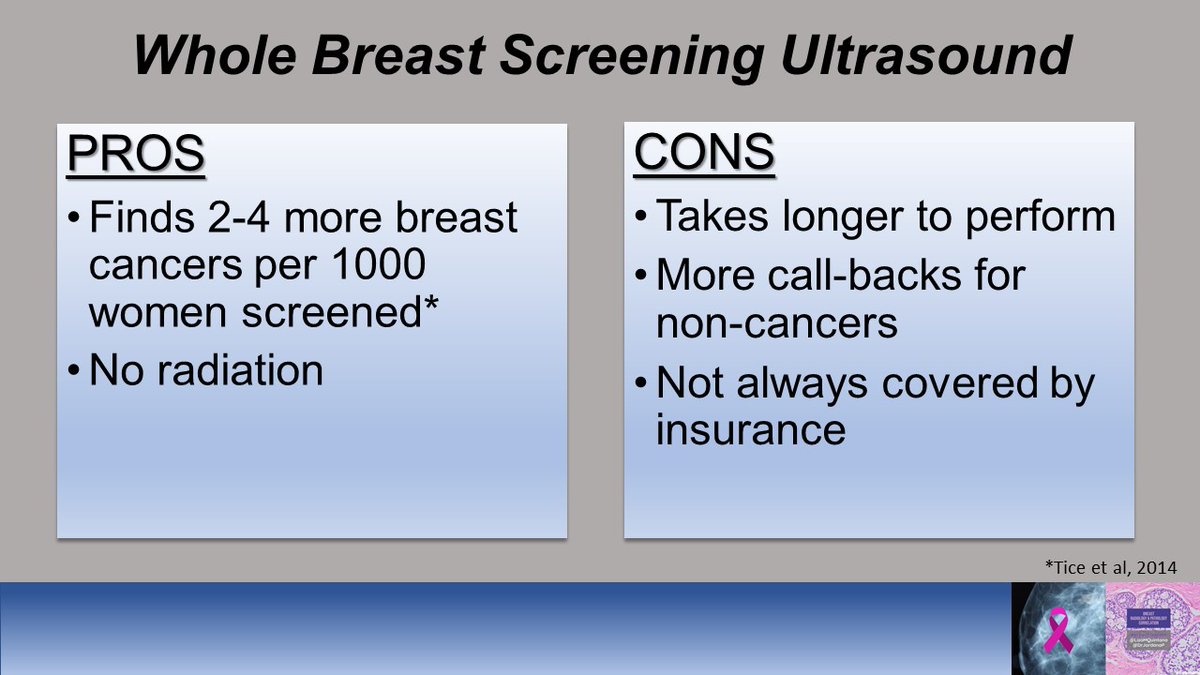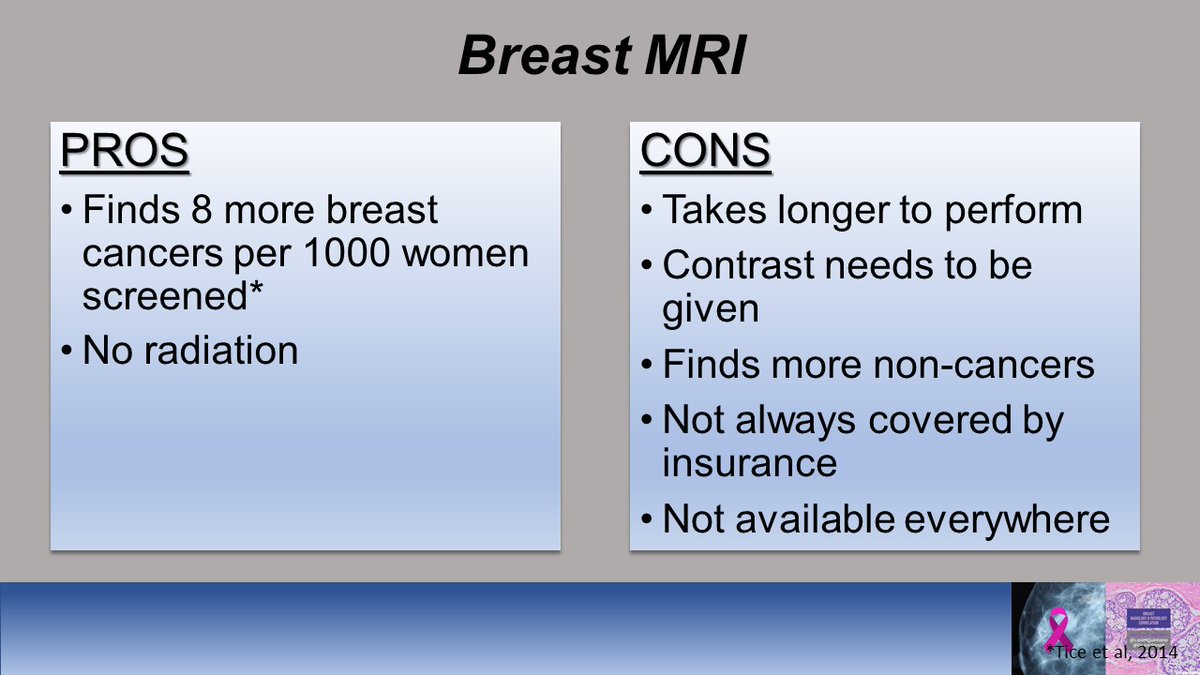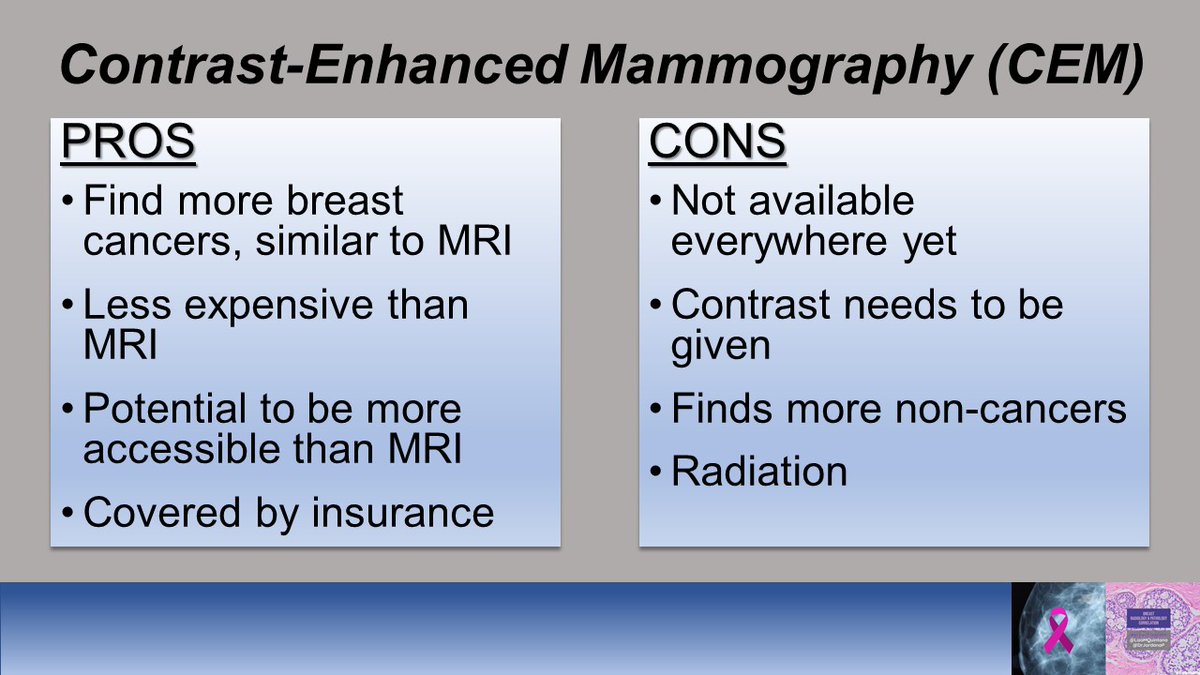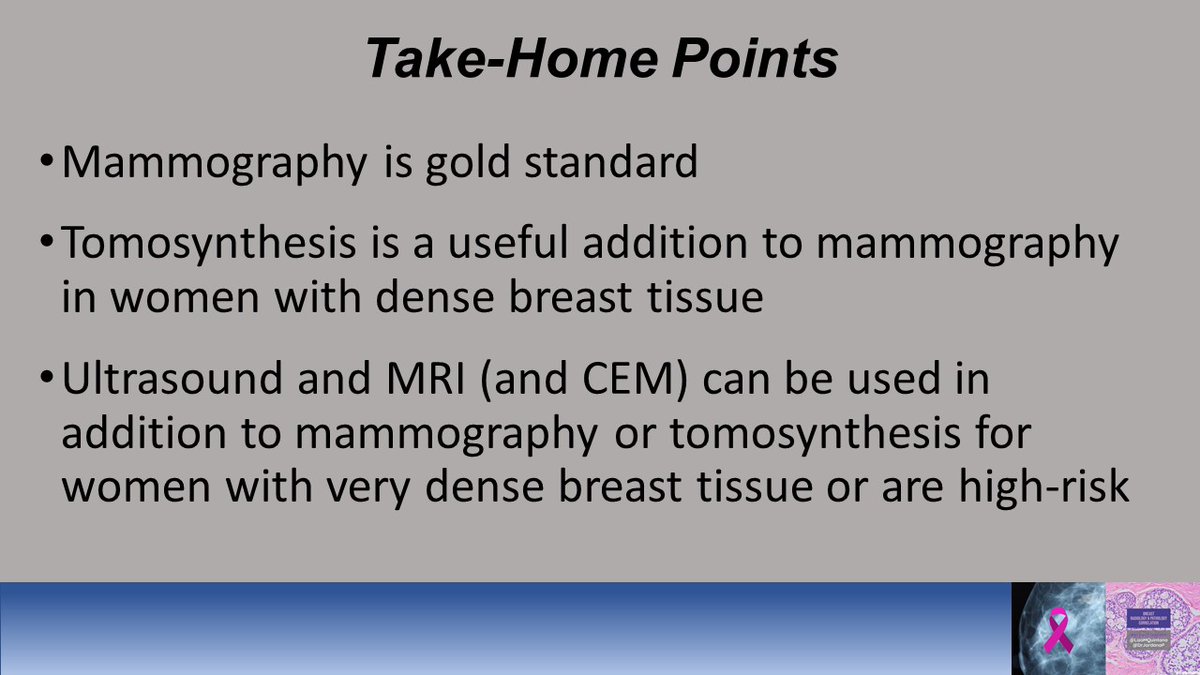1/ Let the tweetorials begin for our #breastradpath series with @LizaMQuintana! We& #39;re starting with the basics of screening mammography for #BCAM
Each screening mammo has 4 images-2 of the right breast and 2 of the left. If any abnormality is seen then we get more images
Each screening mammo has 4 images-2 of the right breast and 2 of the left. If any abnormality is seen then we get more images
2/ There are 2 main areas on all mammograms - white areas are glandular tissue (part of breast that makes milk, yellow on image) & black areas are breast fat (blue). All women have both but in different proportions #breastdensity
3/ Check out what this looks like on the pathology slide. And just to give some definitions: adipose tissue=breast fat, terminal duct lobular unit=glandular tissue, stroma=supporting structure of breast #Breastpath
4/ Some women have mostly breast fat (image on the far left) and have NON-DENSE breast tissue. Some women have mostly glandular tissue (image on far right) and have DENSE breast tissue.
5/ Why do we care about dense breasts??? Because dense white glandular tissue can hide a breast cancer. Check out this woman with DENSE breast tissue and how hard it is to see the cancer (circled in blue)
6/ Now check out this woman with NON-DENSE breast tissue and how much easier it is to see the cancer (blue circle)
7/ DENSE breast tissue can increase a woman& #39;s risk for breast cancer by 2x. This is because cancers can be hidden and also because the glandular tissue is more prone to making breast cancer
8/ Fortunately, there are other imaging options available now to help find breast cancer! We& #39;ll start with 3D mammography (aka tomosynthesis). #3Dmammo helps radiologists look through white glandular tissue to find cancer easier
9/ Here is an example of a cancer that was missed on the 2D mammogram & only found on the #3Dmammo. The cancer looks like a star (green animation). Can you see it???
10/ Many women ask, is 3D worth it?? Many of us think the answer is yes! A large study is currently underway to compare long term outcomes of #2D vs #3Dmammo. #Tmist
11/ More recently, many woman with dense breasts have screening ultrasound in addition to their mammogram. Ultrasound has no radiation and can find more cancer because it can see through the dense white glandular tissue
12/ Here is an example where a breast cancer was hidden by glandular tissue on the mammogram but clearly seen on ultrasound
13/ Another imaging exam that helps find cancer is breast MRI. This is the best test for cancer detection. It works by finding cancers using a contrast agent.
14/ Here is an example where a breast cancer was hidden by glandular tissue on the mammogram but clearly seen on breast MRI (yellow circles)
15/ MRI finds the most breast cancers of all imaging exams, but also can find areas that are non-cancer (false positives). It is also expensive and not available everywhere. For this reason, MRI is offered mainly to women at high-risk for breast cancer
16/ Lastly, Contrast-Enhanced Mammography (CEM) is a new imaging test. #contrastmammo also uses a contrast agent but is less expensive than MRI. Look how hard it is to see the cancer on the mammogram (arrow) and how much easier it is to see after contrast is given (circled)
17/ CEM is pretty new and many sites around the country don& #39;t have it yet, but stay tuned! @BIDMC_BreastImg already offers #contrastmammo to women with history of breast cancer to help improve cancer detection
18/ Phew... all done! Check out the take-home points below. Feel free to reach out with any questions re #breastcancerscreening! Also, check out this video @Breast360
Watch “Latest Screening Options for Patients” on #Vimeo https://vimeo.com/314514998 ">https://vimeo.com/314514998...
Watch “Latest Screening Options for Patients” on #Vimeo https://vimeo.com/314514998 ">https://vimeo.com/314514998...

 Read on Twitter
Read on Twitter
